Nymph Care: [Earth, Moisture, Pruning and Problems]
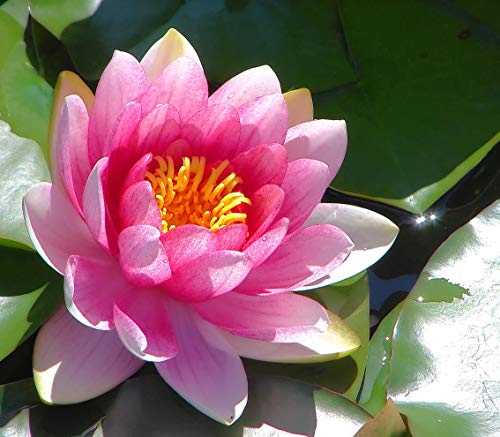
What characteristics do nymphs have?

The nymph, or Greek voice Nymphaea, is a beautiful perennial aquatic plant that does not hide its fascination with freshwater bodies.
Where it usually lives peacefully until it grows at least two meters to enchant its admirers with its beautiful flowers that stand out with great elegance.
They live for several years, they are rhizomatous, that is, they have a long thickened stem that remains below the ground, at the bottom of fresh water courses where they remain.
But there are some species that choose to also leave some of their leaves submerged and others float on the surface of the water.
This means that they have differently shaped leaves, known as heteromorphic. They have been on Earth for quite some time. Specimens of the last era of the dinosaurs are known and in the so-called pre-Hispanic era deities or gods of water were worshiped with the flowers of nymphs or water lilies.
They are also known as Water Lilies, Nymphaea or Water Lily, but in reality their scientific name comes from the Greek Nymphaia, which is precisely reminiscent of the beautiful nymphs of Greek mythology turned into these unique swimming plants.
Some have narcotic effects, but others were used by the pre-Hispanic communities of the Mexican Valley as food. Its habitat includes lakes, ponds, puddles, streams, ponds.
They are highly prized in gardening because they are ideal as an ornament and emit a very fragrant scent, especially the white-flowered variety . Furthermore, there are many cultivars in highly favored species such as Nymphaea alba, or Nymphaea tetragona, commonly known as Nenúfar venus.
The native variety of the Gulf Coast Nymphaia mexicana or yellow lily is considered an invasive weed of wetlands in the southern half of the United States.
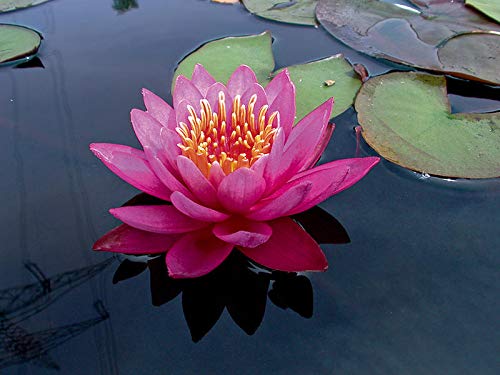
It grows in swamps and large lakes of good depth. Thanks to its enormous colonizing potential, in Spain it has also become a serious threat to local and autochthonous species, which is why it has been included in the Spanish Catalog of Invasive Exotic Species .
It has round leaves of a very bright green tone, with a waxed reddish or purple underside that efficiently protects it from water and its flowers protrude from a peduncle capable of raising them several centimeters (sometimes they protrude up to 20 cm) just to be admired.
These leaves can also exercise effective control over the appearance of algae, but also protect the fish from the threat of external predators. Its seeds germinate in water and it blooms between May to September of each year. The only bad thing is that its flowers last about 5 days, nothing more.
They are almost magical, worthy of admiration thanks to solitary flowers that have a string arranged in layers with a unique perfection, which get smaller as they approach the center of the flower.
The colors of the flowers reach their maximum splendor in the summer , when they float in a multicolored water dance, in shades of white, yellow, blue, pink, violet or purple. There are about 50 species from the northern hemisphere of the planet, specifically from tropical regions , all rhizomatous.
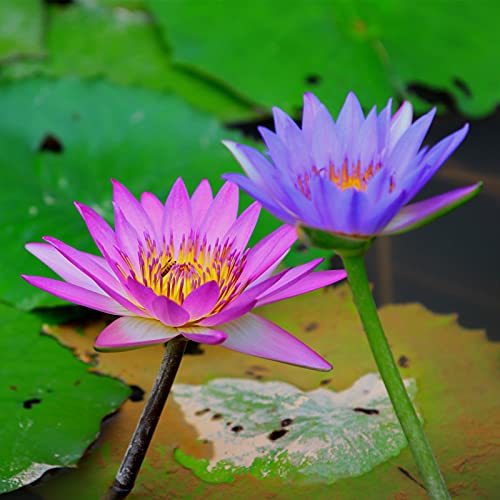
They have, in fact, a long rhizome that reaches the surface of the water, because it is strong, fleshy, knotty and draws nutrients from the bottom of stagnant water.
Among the best known are: Nymphaea gigantea, Nymphaeacaerulea, Nymphaea capensis, Nymphaea tuberosa, Nymphaea amazonum and Nymphaea pygmaea alba, among others.
At present, there are many species that are used for ornamental purposes and some are even used to extract food, since the seeds and rhizomes of the Victoria and Nymphaea genera are eaten.
Precisely the genus Victoria is very impressive because it has two American species, the V. Cruziana in Argentina, and the V. amazónica, native to the extensive Amazon rainforest.
They have leaves that can reach two meters in diameter, a show in the water and they bloom a lot. Its striking white and yellow flowers can be about 30 cms.
These behave very actively, because during the day they open with the intention of attracting beetles or coleopterans for pollination purposes, thanks to their penetrating aroma.
The result is of double benefit, because the beetle feeds on the starch present in the flowers, while this achieves its task: impregnate the coleopterans with pollen, which escape in the afternoon, when the flower opens again and then closes. again the next dawn, looking for new pollinators.
The incredible thing is that each pollinated flower changes its color, turns pink and no longer emits any perfumed odor, until it disappears by submerging so that the white flowers have no competition and are pollinated.
A common way to grow water lilies is to do it at the bottom of a pond after adding soil, or in submerged pots. Do you dare to grow these beautiful aquatic plants? In the following summary we will tell you which are the most important aspects to take into account if you want to immerse yourself in the magic of nymphs.
What land needs do nymphs have?
When it comes to preparing soils tailored to water lilies, the planting of this species can preferably be done in spring, after preparing a substrate that has a rich supply of organic fertilizer.
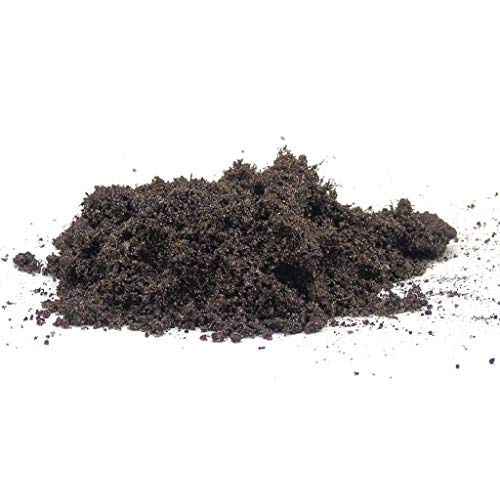
The ideal combination is the following: 1/3 leaf mulch previously bound with coarse sand , as well as 1/3 of garden soil and a similar amount of peat.
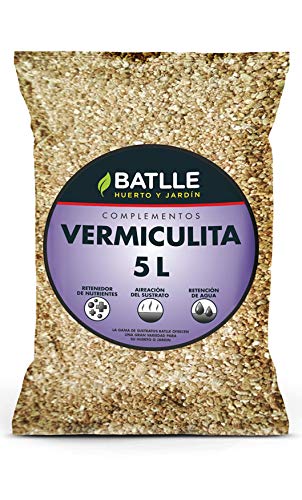
Experts also recommend that the sand is placed on the ground, on top, in order to prevent the water from turning cloudy when spring arrives and it is time to pour water into the pond.
And is that the pond must have a cloudy bottom and a much clearer surface, so we should not get too obsessive about cleaning.
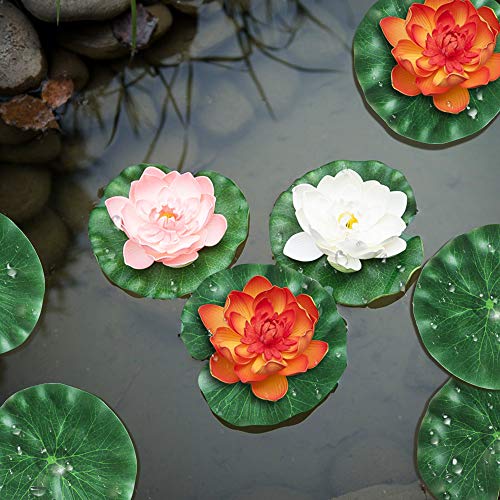
But it is also true that the water where water lilies live should never be dirty, without maintenance. And you can’t lower your level either.
Another high-carat consideration is the following: once the flowering period, which usually occurs in late fall , is over, it is essential to carry out a deep cleaning of the pond while keeping the plants in submerged pots.
The most important fertilizer is applied with manure , taking advantage of this greater maintenance work to the pond. A slow release fertilizer is very convenient too, or you should ask your trusted nursery for specific substrates for aquatic plants.
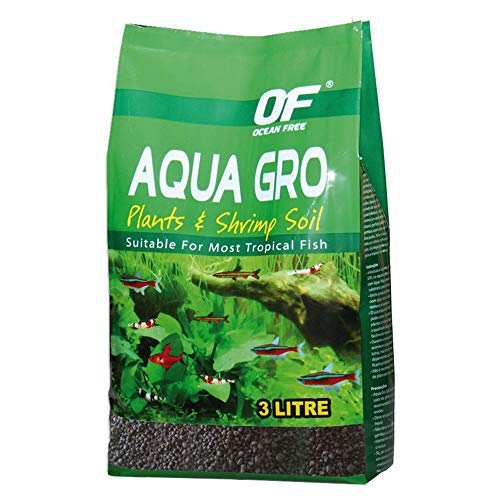
How to make nymphs grow strong and vigorous?
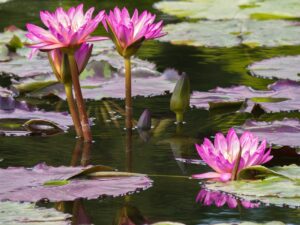 One of the main needs of water lilies is direct exposure to the sun, without restrictions. And the best time for planting is undoubtedly spring.
One of the main needs of water lilies is direct exposure to the sun, without restrictions. And the best time for planting is undoubtedly spring.
If at home we have an aquatic area such as a pond, a fountain, aquatic plants are ideal as natural decoration. It should be noted that aquatic plants in general are very self-sufficient.
They not only beautify an aquarium, pond or fountain, they are also capable of providing a very healthy habitat for the rest of the members of the ecosystem, such as fish, who will be blessed by beneficial bacteria.
We must not forget for the world that plants are great chemical machines that transform light and carbon dioxide, giving us environments loaded with excellent levels of oxygen where healthier fish will grow.
So simple and wonderful at the same time. In the same way, aquatic plants in general are also capable of using other toxic nutrients for the rest of living beings, such as nitrites, nitrates and ammonia, as well as heavy metals.
What moisture do nymphs need?
The white variety requires that the water be in good condition so that they are not damaged. They are ideally grown in lakes, swamps and ponds, but they are also adapted in the aquatic area of a garden.
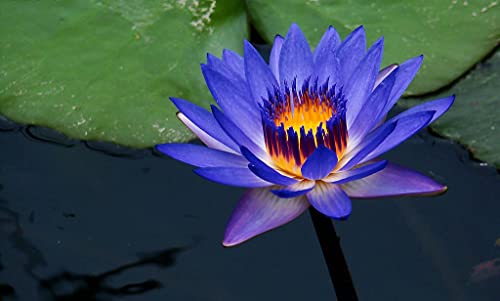
It prefers warm waters, supports low temperatures and demands a substrate rich in nutrients. In pot and other places in the pond you can plant its rhizomes and stems, delicately cut into pieces.
The seeds can be placed in pots submerged in water specially designed for aquatic plants, because they allow rooting and prevent the soil from being watered throughout the pond. As the plant grows , the water level will rise.
Is it necessary to prune nymphs?
Likewise, it is recommended to place a wire mesh on the surface of the pond when there are deciduous plants near them .
How often should we prune nymphs?
How to avoid nymph pests and diseases?
They are very susceptible to receiving the devious attack of the black louse, an insect that invades quickly. Immediate treatment with insecticidal products must be applied .
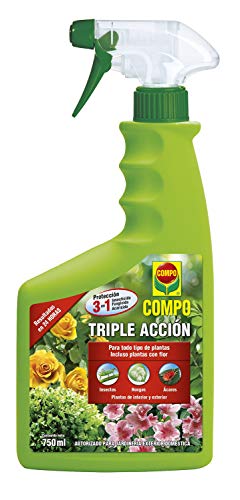

![Photo of How to Organize a Garden of 80 meters: [Steps to follow]](https://www.complete-gardening.com/wp-content/uploads/2022/08/how-to-organize-a-garden-of-80-meters-steps-to-follow-390x220.jpg)
![Photo of The Surfinia or Hanging Petunia: [Planting, Care, Irrigation and Substrate]](https://www.complete-gardening.com/wp-content/uploads/2022/08/the-surfinia-or-hanging-petunia-planting-care-irrigation-and-substrate-390x220.jpg)

![Photo of The Cultivation and Planting of Soybeans: [Complete Step-by-Step Guide]](https://www.complete-gardening.com/wp-content/uploads/2022/08/the-cultivation-and-planting-of-soybeans-complete-step-by-step-guide-390x220.jpg)